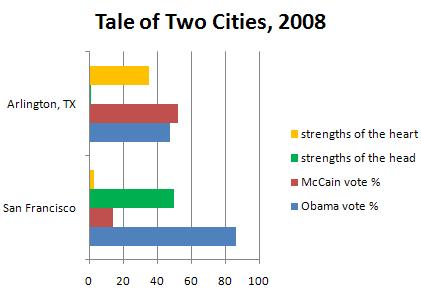The American Enterprise Institute has released a new survey called “High Schools, Civics, and Citizenship: What Social Studies Teachers Think and Do.” I know four of the authors and respect their work in general as well as this particular survey.
Ideology is inescapable when we consider civic (a.k.a. political) education. AEI is generally seen as a conservative organization, but that does not mean that the report is biased or designed to reach conclusions convenient to conservatives. On the contrary, it rebuts the kind of sharp conservative critique represented by Chester Finn and colleagues in a 2003 Thomas B. Fordham Institute report entitled Where Did Social Studies Go Wrong?. Finn claimed that students emerged “from K-12 education and then, alas, from college with ridiculously little knowledge or understanding of their country’s history, their planet’s geography, their government’s functioning, or the economy’s essential workings.” The underlying problem, he asserted, was that social studies teachers had bad values. By the year 2001, he wrote:
- in the field of social studies itself, the lunatics had taken over the asylum. Its leaders were people who had plenty of grand degrees and impressive titles but who possessed no respect for Western civilization; who were inclined to view America’s evolution as a problem for humanity rather than mankind’s last, best hope; who pooh-poohed history’s chronological and factual skeleton as somehow privileging elites and white males over the poor and oppressed; who saw the study of geography in terms of despoiling the rain forest rather than locating London or the Mississippi River on a map; who interpreted ‘civics’ as consisting largely of political activism and ‘service learning’ rather than understanding how laws are made and why it is important to live in a society governed by laws; who feared that serious study of economics might give unfair advantage to capitalism (just as excessive attention to democracy might lead impressionable youngsters to judge it a superior way of organizing society); and who, in any case, took for granted that children were better off learning about their neighborhoods and ‘community helpers’ than amazing deeds by heroes and villains in distant times and faraway places.
This assertion was not based on any data whatsoever. In contrast, the new AEI survey finds:
- 83 percent of the teachers surveyed [see] the United States as a unique country that stands for something special in the world. At the same time, 82 percent of survey respondents say students should be taught to ‘respect and appreciate their country but know its shortcomings.’ Despite all of the concerns about anti-American sentiment in schools of education, just 1 percent of teachers want students to learn ‘that the U.S. is a fundamentally
flawed country.’ This sounds, to our ears, like a near pitch-perfect rendition of what parents, voters, and taxpayers would hope for–schools where students learn that America is exceptional even as they learn about its failures.
In the AEI survey, 60% of teachers think it is “absolutely essential” to teach students to “follow rules and be respectful of authority.” Many fewer (37%) think it’s absolutely essential to teach students “to be activists who challenge the status quo of our political system and seek to remedy injustices.” Four out of five consider it absolutely essential to know the components of the Bill of Rights and to have “good work habits such as being timely, persistent, and hardworking.” One in five think that education professors are overly critical of the US; eight percent think those professors are overly appreciative.
The AEI results are consistent with our own finding that many more young Americans recall studying “great American heroes and virtues of the political system” than “racism and other forms of injustice.” I don’t necessarily object to the balance that exists in most American classrooms, but I do think leftists critics have more empirical basis for their complaints than conservatives have. If the ideological valence in our schools is wrong, it’s not that students receive an overly cynical account of American history but rather than real injustices are ignored.
On most of the questions about values and goals, public school and private school teachers respond similarly. But their actual practices are different. For example, 86% of private school students say they expect their students to keep up with the news, compared to 44% of public school teachers. That could be in part because laws and policies that govern public schools make no place for current events. Forty-five percent of public school teachers in the survey–but only 9 percent of private school teachers–say that “social studies has been deemphasized” because of No Child Left Behind.




